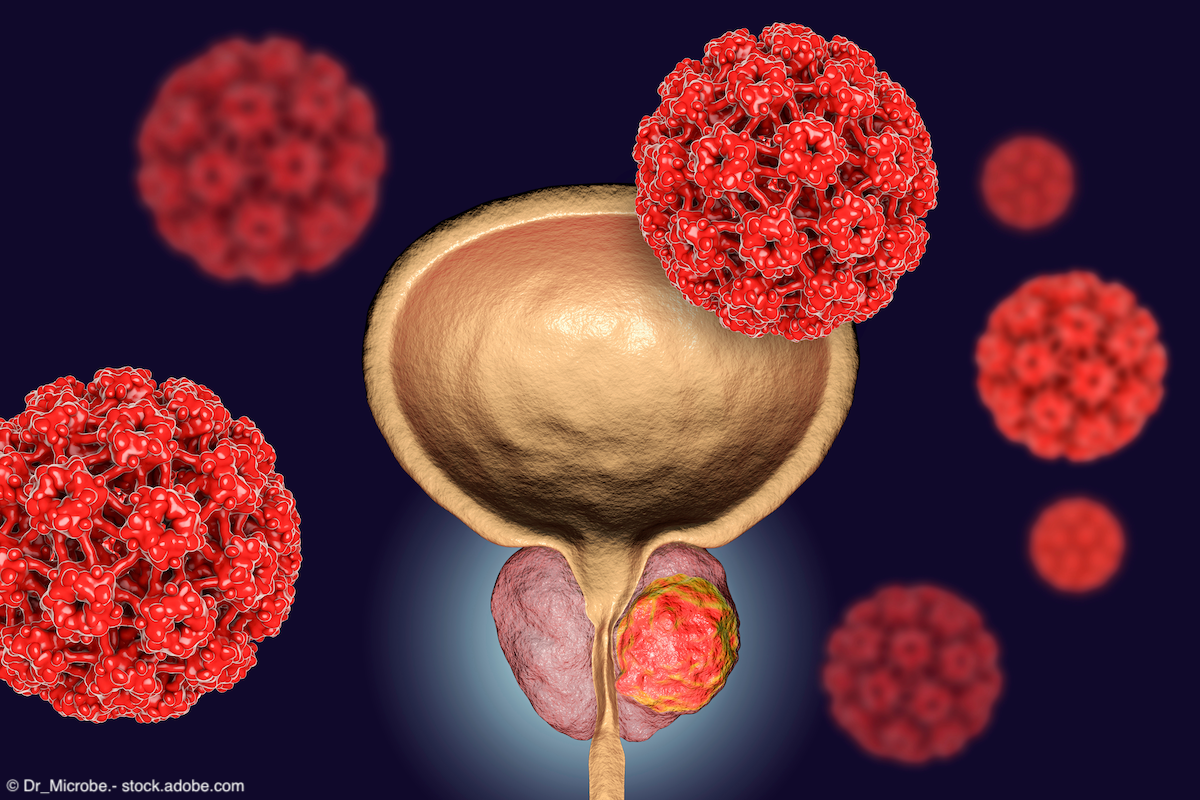Article
Enzalutamide succeeds in phase 3 study of Chinese patients with mHSPC
Author(s):
"While past global studies have supported the use of Xtandi plus ADT in men with mHSPC, it is encouraging to see these results replicated for patients in mainland China," said Zhou Fangjian, MD.
Adding enzalutamide (Xtandi) to androgen deprivation therapy (ADT) significantly improved time to prostate-specific antigen (PSA) progression (TTPP) versus ADT alone in Chinese patients with metastatic hormone-sensitive prostate cancer (mHSPC), meeting the primary end point of the phase 3 China ARCHES study (NCT04076059).1
Astellas Pharma plans to submit the data from the trial for publication and communicate with the China National Medical Products Administration about using these results to support a regulatory filing.

The study also showed that patients receiving enzalutamide/ADT had improved radiographic progression-free survival (rPFS) and were more likely to reach an undetectable PSA level, which were key secondary end points of the trial.
Astellas Pharma, which co-develops enzalutamide along with Pfizer, reported in a press release that it plans to submit the data from the trial for publication and communicate with the China National Medical Products Administration about using these results to support a regulatory filing.
"While past global studies have supported the use of Xtandi plus ADT in men with mHSPC, it is encouraging to see these results replicated for patients in mainland China," Zhou Fangjian, MD, head of the Urology Department, Sun Yat-sen University Cancer Center, Sun Yat-sen University, stated in the press release.1
Overall, the double-blinded phase 3 China ARCHES trial enrolled 180 Chinese men with mHSPC and randomized them to ADT plus either enzalutamide (160 mg daily) or placebo. The study defined the primary end point of TTPP as, “a ≥ 25% increase and an absolute increase of ≥ 2 ng/mL above the nadir, which is confirmed by a second consecutive value at least 3 weeks later.”1
Regarding safety, there were no new safety signals observed with enzalutamide compared with the established safety profile of the therapy.
"As an existing standard of care for Chinese men with castration-resistant prostate cancer, Xtandi has the potential to help men earlier in their treatment journey – before their disease stops responding to therapies that lower testosterone," Prof. Ye, Dingwei, vice president of the Fudan University Shanghai Cancer Center, director of the Multi-disciplinary Team for GU Cancer, stated in the press release.1
US/EU approval in this setting
In the United States and European Union, enzalutamide is approved for the treatment of patients with mHSPC based on findings from the phase 3 ARCHES trial. The double-blinded study randomized 1150 men with mHSPC to ADT plus either enzalutamide or placebo.
The median rPFS in men with metastatic hormone-sensitive prostate cancer was not reached with enzalutamide plus ADT and was 19.45 months with placebo and ADT, translating to a 61% reduction in risk of radiographic progression or death with enzalutamide (HR, 0.39; P <.0001).2,3
The addition of enzalutamide to ADT was also shown to reduce the risk of death by 34% (HR, 0.66; P <.0001) and reduce the risk of TTPP by 81% (HR, 0.19; P <.0001).
"With the rising incidence of prostate cancer diagnoses among men in China, there is a need for new and effective treatment options," Ahsan Arozullah, MD, MPH, senior vice president and head of Development Therapeutic Areas, Astellas, stated in the press release.1 "As observed in our global Phase 3 ARCHES study, and now reaffirmed with China ARCHES, Xtandi significantly delays the time to disease progression in men with mHSPC and may provide an important treatment option for men in China if approved."
References
1. Astellas Announces Phase 3 China ARCHES Study of XTANDI® Meets Primary Endpoint. Published online and accessed March 13, 2023. https://prn.to/3lh3JwT
2. Xtandi (Enzalutamide) approved by U.S. FDA for the treatment of metastatic castration-sensitive prostate cancer [news release]. Pfizer. Published December 16, 2019. https://bit.ly/2tpujIV. Accessed December 16, 2019.
3. Armstrong AJ, Szmulewitz RZ, Petrylak DP, et al. Phase 3 study of androgen deprivation therapy (ADT) with enzalutamide (ENZA) or placebo (PBO) in metastatic hormone-sensitive prostate cancer (mHSPC): The ARCHES trial. J Clin Oncol. 2019;37(suppl 7, abstr 687). doi: 10.1200/JCO.2019.37.7_suppl.687. https://bit.ly/2PAr10g.
Newsletter
Stay current with the latest urology news and practice-changing insights — sign up now for the essential updates every urologist needs.

















